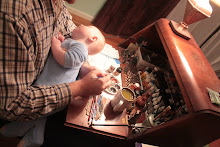 |
| Crude and Hasty Map |
While the king gives nominal fealty to the king of Kékhzmet, in actuality the country is independent. The king has a council of elders, who are reputed to speak with the voice of the ancients. What this means, few know, as the council is not seen in public. The city has approximately 1750 households, but appears to be smaller, as many of the residents live under ground. Trade with Kékhzmet is mostly concentrated on exchanges of grain from the more fertile north, for the well wrought swords of Ir-Simha. There are also large flocks of sheep, which provide cloth and meat for the city. The village at the east end of the kingdom relies heavily on timber production, in addition to providing services to traders and travelers moving from one part of Kékhzmet to the other. Ir-Simha uses imperial standard measures, and takes imperial coin, although most are over stamped with dwarvish markings.
Ir-Simha was founded as a slave town early in the rule of the Titans, housing the working crews used to mine iron from the hills. After the overthrow of the Titans, more dwarves came to this area, and a frantic fortification process protected them from the upheaval of the era. Elves came in numbers during the high days of the Empire, and created the south above ground town. The fortifications were expanded when the Empire dissolved, and have recently be modified again to take heavier war machines on the main bastions.
Near Ir-Simha are the ruins of a small pre-Imperial town. The buildings appear to be mostly elvish in nature, and only survive due to the arid nature of the high mountain regions.
To the north west is a giant head and arm which appear to grow from the hard talus of the slopes. The face is approximately ten cubits across. Curiously, the head is screaming, and the hand is missing from the upraised arm.
East of the north south road is a tall black tower, clearly burnt out long ago.
Tuesday, more Deepest Sea A-Z with Justice.


No comments:
Post a Comment